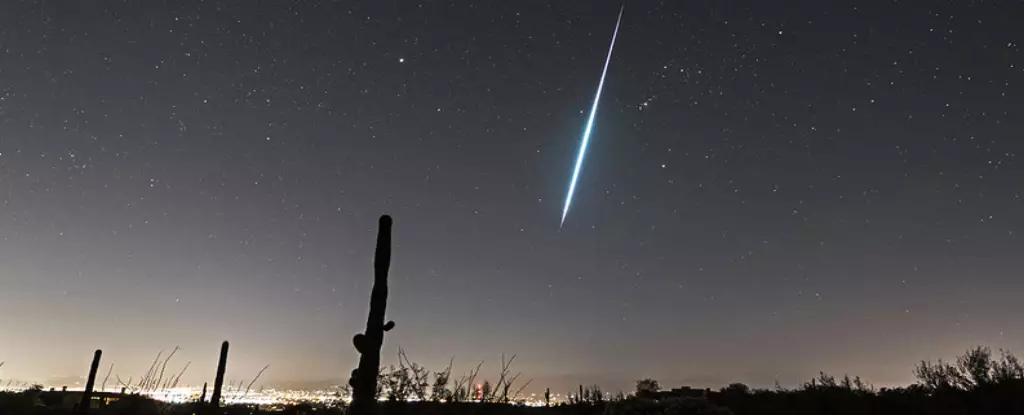As 2024 draws to a close, stargazers are in for a fantastic spectacle: the annual Geminid meteor shower. This astronomical phenomenon is set to reach its peak on the nights of December 13th to 14th, offering a mesmerizing display of meteors for those fortunate enough to observe it under clear skies. As we prepare for this celestial event, various factors, including weather conditions and lunar illumination, will play crucial roles in how well we can witness this amazing display.
The Geminids are known for their striking rate of meteoric activity, with estimates suggesting up to 120 meteors may grace the skies per hour at their peak. This year, the shower will reach its zenith at 3:00 Universal Time on December 14th (10:00 PM EST on December 13th), creating an optimal window for viewing in places like western Europe and North America. Unique to the Geminids is their visibility from early evening hours, which allows observers to catch a glimpse of shooting stars before midnight — a refreshing change for winter enthusiasts.
However, potential viewers should note that the lunar phase poses challenges this year. The moon will be a waxing gibbous, 98% illuminated, and will appear prominently in the sky. Its brightness could hamper visibility, particularly for fainter meteors in the shower. Choosing the right location becomes paramount; ideally, enthusiasts should seek areas with minimal light pollution and a clear, wide horizon to enhance their viewing odds.
At the heart of the Geminid phenomenon lies 3200 Phaethon, a unique celestial body that has sparked much intrigue among astronomers. Often referred to as a “rock-comet,” 3200 Phaethon has a rapid orbit of just 1.4 years, blurring the lines between asteroids and comets. Japan’s upcoming DESTINY+ mission, aimed at launching in 2028, seeks to uncover more about this fascinating object. As the source of the Geminid meteors, understanding 3200 Phaethon could unlock numerous mysteries about our solar system’s evolution and the origins of meteor showers.
The history of the Geminids is rich, with records of this shower dating back to 1862. The meteors have notably increased in intensity over the years, surpassing the well-known Perseids as the premier meteor shower enjoyed by enthusiasts worldwide. This trend reflects the dynamic nature of our cosmos, inviting avid sky watchers to contemplate the age-old question of humanity’s place in the universe.
To truly appreciate the Geminids this year, observers must be strategic. The key to maximizing meteor sightings lies in selecting the right location and timing. While the moon will dominate the sky, predawn hours may offer better opportunities, as it will be closer to the horizon and easier to avoid. Choosing a site with natural obstructions like hills or trees can block out moonlight and provide a more optimal viewing environment.
In addition to observing with the naked eye, photography enthusiasts can enhance their experience by setting up a wide-field DSLR camera equipped with an intervalometer. This setup allows for automatic timed exposures, capturing multiple frames throughout the night, ensuring that even the most elusive meteors don’t go unnoticed. Angling the camera away from the radiant at about 45 to 90 degrees can provide stunning profiles of the meteors as they streak through the night sky.
Observing meteor showers not only offers a glimpse into spectacular natural phenomena but also presents an opportunity to participate in ongoing scientific research. Those interested can contribute to the International Meteor Organization (IMO) by recording their observations and reporting their findings. This citizen science approach invites amateurs and professionals alike to come together in the quest for knowledge about these brilliant cosmic displays.
As we near the peak of the Geminid meteor shower and the year’s end, participants can also explore other showers active throughout mid-December, such as the Taurid fireballs and the Ursids, which reach their peak on December 22nd. These overlaps offer added incentive for night sky enthusiasts to venture outdoors and indulge in the beauty of the cosmos.
The Geminids promise to deliver an exceptional display in 2024, despite the chilly weather and bright moon. By employing careful planning and captivating techniques, stargazers can make the most of this extraordinary celestial event, creating lasting memories beneath a blanket of stars. Don’t miss this opportunity to witness one of nature’s brightest spectacles as we bid farewell to another year.

